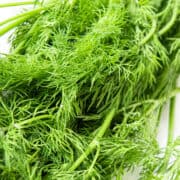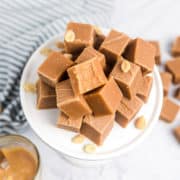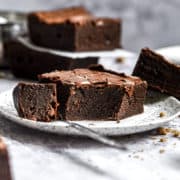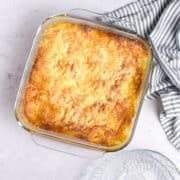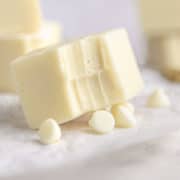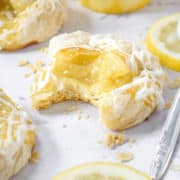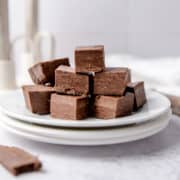Dill, or dill weed, is an aromatic herb that can be used in a variety of recipes. In fact, it's one of the most under-used herbs because it's not only good for use in fish recipes. If you're planning to incorporate fresh dill in a recipe it's important to find out how to store dill, so you can keep it fresh, fragrant, and delicious.
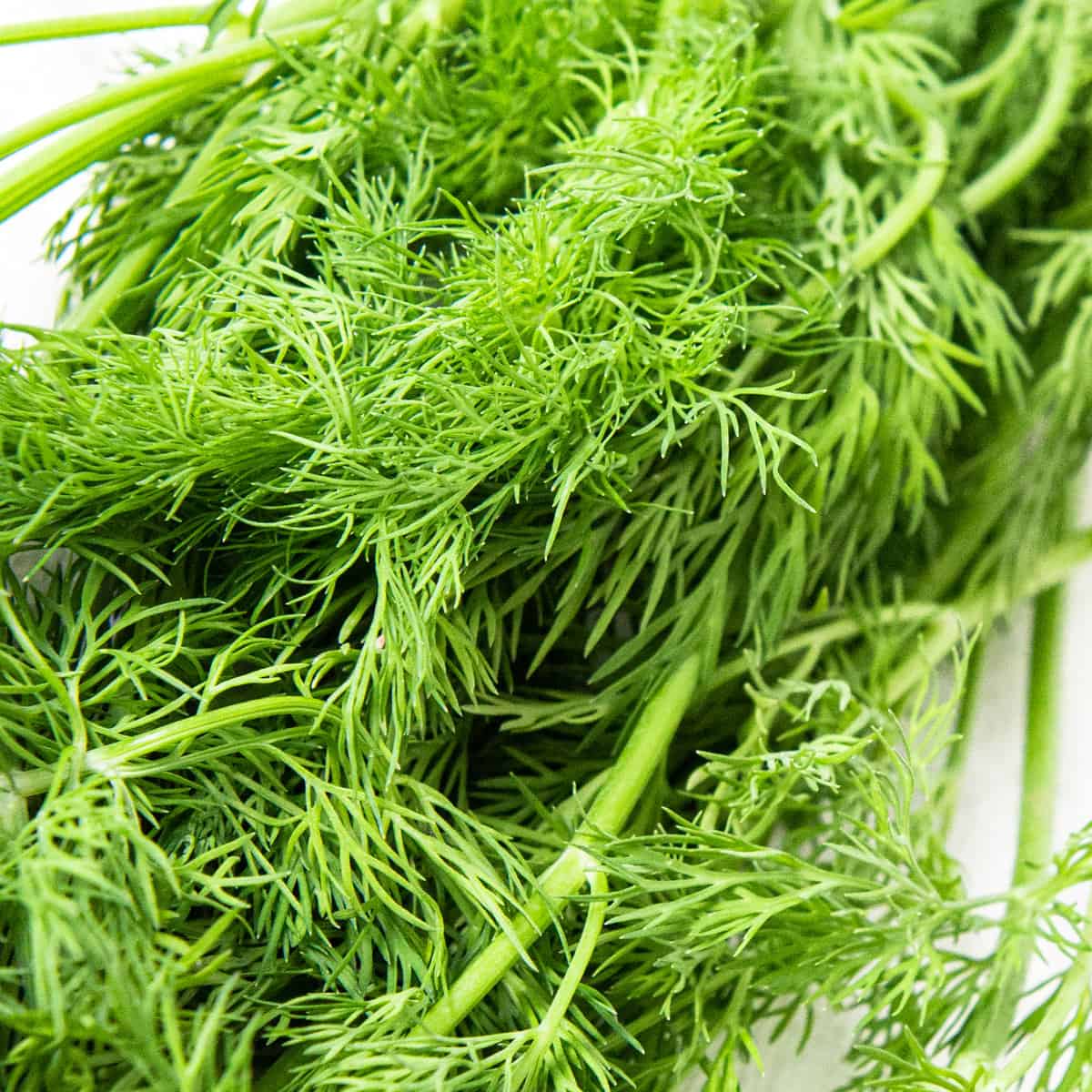
Jump to:
You can recognize dill by its wispy, feathery leaves and grassy, fragrant aroma. As well as being nice with fish, it goes with salads, sauces, and a variety of vegetable dishes.
It's also used in pickling liquid to make dill pickles, and features in various salad dressings. Dill is really good added to a creamy potato salad, especially if you add a little mustard too. And dill pickles are always wonderful, whether used to top a hamburger, served as part of a salad recipe, or even served as a simple snack.
I like to add fresh dill to salmon when poaching or pan-frying it for the best flavor. The delicate taste of the dill goes so well with the salmon and this is a great way to elevate an otherwise very plain fish recipe and give it extra flavor.
I've used it to make ranch dressing too, by adding dill with other herbs and seasonings to buttermilk and Greek yogurt and whizzing it all together in a food processor - although I use dried rather than fresh dill for that.
What is Dill?
Dill (Anethum Graveolens) is a delicate herb used in many cuisines from Asian to European. It's a member of the celery family and the name comes from "dylla" - an ancient Norse word meaning to soothe or calm. Dill plants have sweet, grassy-tasting leaves and brown, flat dill seeds that taste a bit like caraway. As with other types of fresh herbs, it's important to know how to store dill weed to keep it fresh.
There are nutrients in dill but, because the serving size is typically so small, they are negligible. Not many people will eat a whole bunch of dill in one sitting since it's more of a garnish or seasoning. Dill provides you with Vitamins A and C, along with iron, folate, and manganese. Typically only the leaves are used in most recipes and the thick stems are discarded because, although edible, they can be woody.
Dill has been used for thousands of years in the Middle East, India, Ancient Rome, and Ancient Egypt, as both a food flavoring and a natural medicine. Essential oils can also be prepared using it. Dill was introduced into the United States by settlers and is found in many grocery stores and farmers' markets. You can also grow your own dill and, that way, you will always be able to snip off some fresh dill whenever you need it.
How to Purchase Dill
As is the case with most other fresh herbs, dill weed should be bright green with a healthy appearance. The leaves should be feathery rather than droopy or wilted, and the plant should be free from slime, discoloration, and mold.
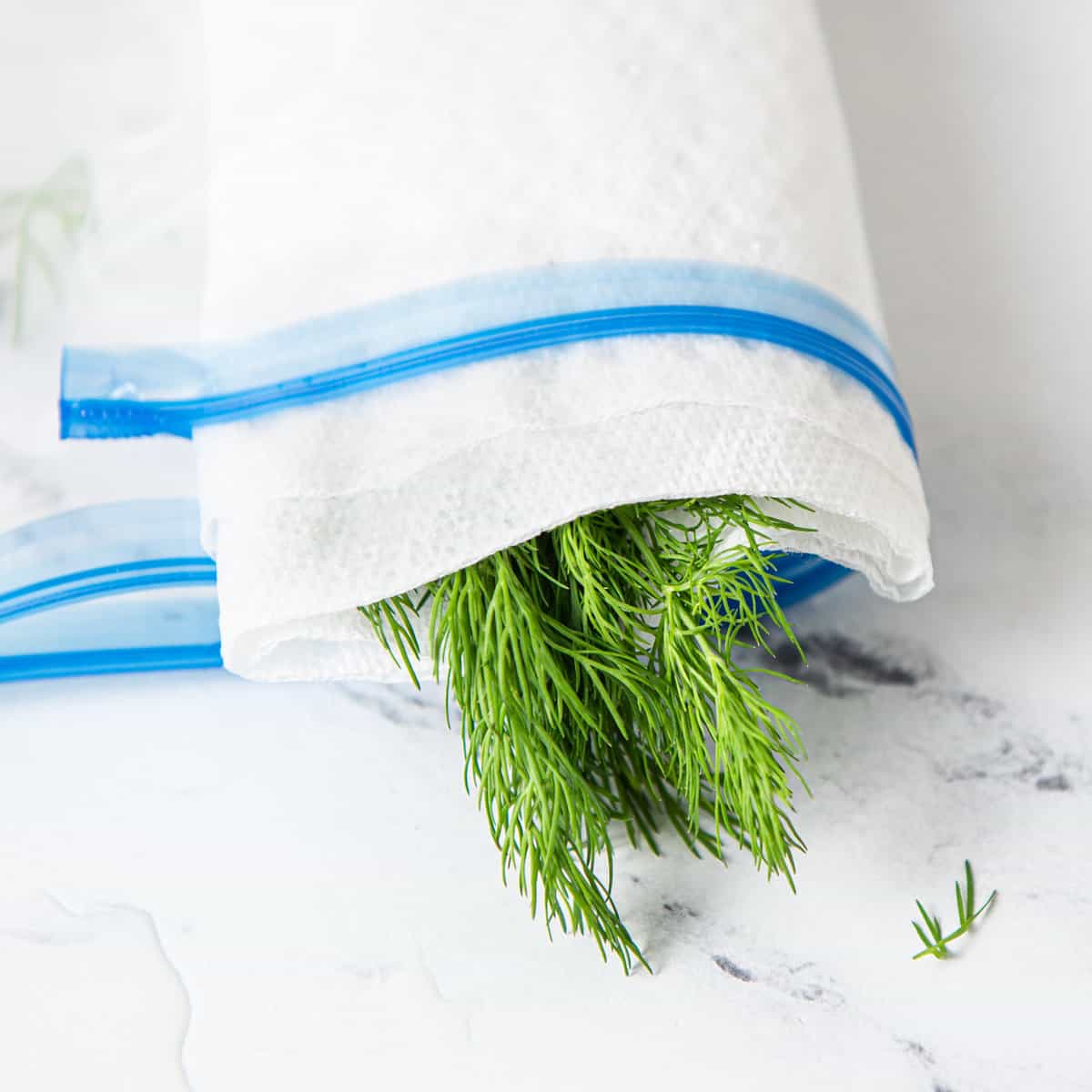
How to Store Dill
Not many recipes call for a whole bunch of dill, so you will want to know how to store dill to keep it fresh for more than one recipe. You have various options, including refrigerating or freezing or using dried. It might have been kept at room temperature for a while and then sold in a paper bag but that's not the best way to store it for a long time.
- To refrigerate dill: Rinse it under cold water, dry it in a salad spinner, and then wrap the dill weed loosely with a damp paper towel. After that, you can put it in an airtight container or plastic bag and it should stay fresh in the crisper drawer of the refrigerator for up to 5 days. Squeeze any excess moisture out of the paper towels and replace them with new ones every couple of days.
- To freeze dill: Chop it into pieces and put them into a freezer bag. It's best to squeeze out as much air out as possible before sealing the bag. Frozen dill should be last for up to 6 months and you can break off however much you need. This is a good idea if you have larger quantities of fresh dill or too much to use within a few days. You can also arrange it on a parchment paper lined cookie sheet or baking sheet and freeze in a single layer, then transfer it into freezer bags if you want to thaw sprigs of it rather than just snap off frozen chunks.
- A different method is to make frozen dill ice cubes: These are good to add to stews and sauces. To do this, put pieces of fresh dill in the holes of ice cube trays until they're ⅔-full, and then top up with olive oil. Use plastic wrap to cover the ice cube tray tightly. Freeze the dill ice cubes overnight and then transfer the dill ice cubes into freezer bags. Use them within a year for the best result. They're also safe to keep for longer but the flavor will start to degrade.
Another way to preserve dill weed is to dry it for long-term storage. Dry herbs can add plenty of flavor to a wide variety of dishes, and the best part is it keeps for many months, maybe even longer. To dry dill, tie the sprigs of dill together and hang them somewhere dry and cool, upside down. Then just leave them to dry out.
When crumbling, keep them in an airtight container in a cool, dark, and dry place, and use them within a year. Of course, you can also purchase dried dill from the grocery store, but if you have plenty of fresh dill to use up, you might prefer to make your own dried dill to preserve it for future use.
How to Tell if Dill Has Gone Bad
Dill which has spoiled will be soft, discolored, and floppy. It might also have an "off" smell or even mold. Throw it out once it reaches this state because it will taste bad and might even make you sick. The dried leaves won't go bad really but they do end up losing their potency, so keep dried dill somewhere dark, dry, and cool to keep it tasting good.
Common Questions
Most recipes will work using either fresh or dried dill, but it's important to know that the taste of dried dill is much stronger than fresh dill weed. If you're using dried dill instead of fresh, use about ⅓ of the amount the recipe calls for. If the recipe calls for a tablespoon of fresh dill, you can sub a third of that (a teaspoon) of dried. Fresh dill has a more fragrant, vibrant taste than dried, so the change in flavor will be discernible but not by too much. But use your own judgment.
Along with dill pickles and dill-based dressings, there are some more unusual recipes for this annual herb. Have you heard of Kool-Aid pickles, also known as "koolickles"? These are popular with kids in various parts of the Southern US and are made by soaking dill pickles in pickle brine and Kool-Aid for a week or so. They sell for $0.50 or $1 at events and fairs.
Dill sauce for fish is also really good. To make this, combine sour cream or Greek yogurt, mustard, garlic, lemon, fresh dill, and a little salt and pepper. It is creamy and unctuous and goes with pretty much any type of fish. You can add some milk if it's too thick.
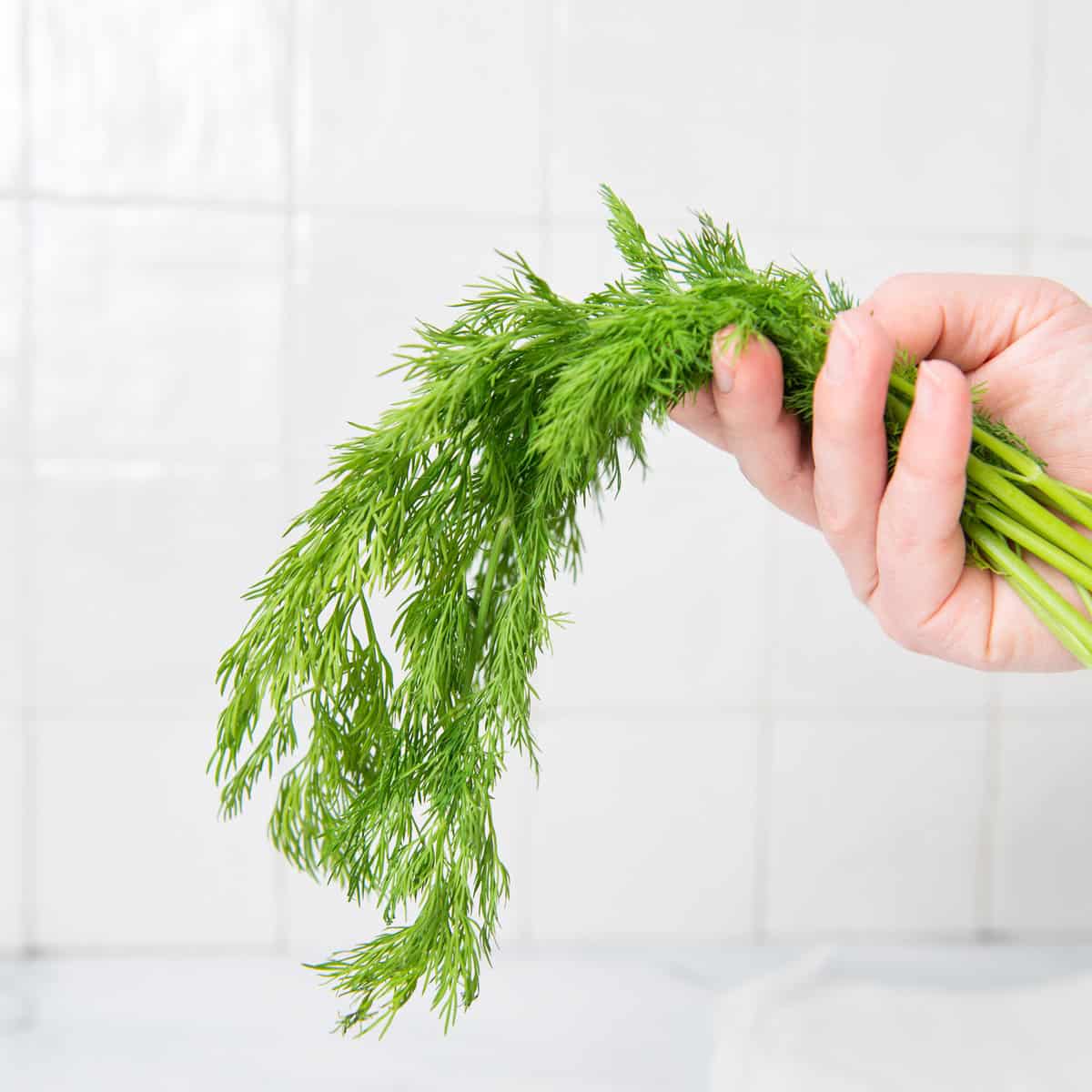
Unusual Facts
- Dill was used as a type of currency in Scotland and Northern Germany in ancient times, before paper money was invented.
- The flowers of the dill plant are also edible and taste very much like the leaves.
- Dill plants can grow up to 18 inches high but, under the right conditions, can grow even taller.
Once you know how to store dill weed to keep it fresh, fragrant, and delicious, you might find yourself wanting to learn more about the tasty recipes you can make with this fresh or dried herb. There are plenty of dill-icious dishes to consider!
